엔론 스캔들(Enron Scandal) 영문
 등록일 / 수정일
등록일 / 수정일 페이지 / 형식
페이지 / 형식 자료평가
자료평가 구매가격
구매가격
- 2010.07.13 / 2019.12.24
- 14페이지 /
 docx (MS워드 2007이상)
docx (MS워드 2007이상) 



 2건 (구매금액의 3%지급)
2건 (구매금액의 3%지급)- 1,400원
최대 20페이지까지 미리보기 서비스를 제공합니다.
자료평가하면 구매금액의 3%지급!
 1
1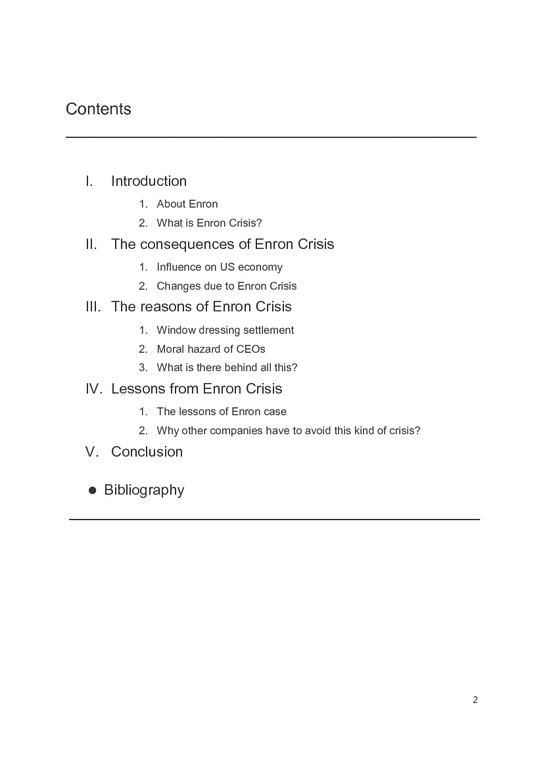 2
2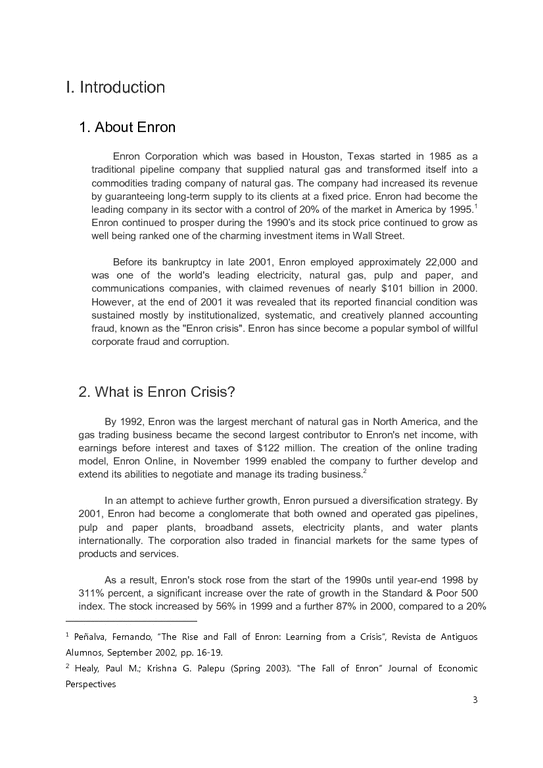 3
3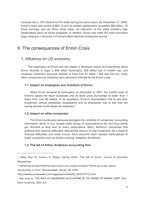 4
4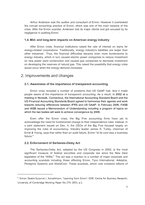 5
5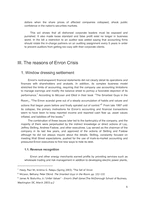 6
6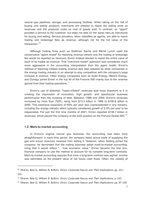 7
7 8
8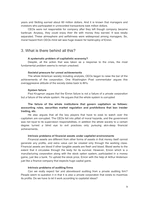 9
9 10
10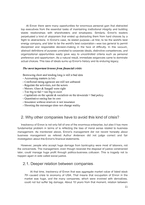 11
11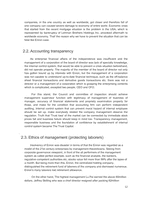 12
12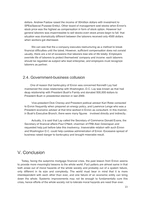 13
13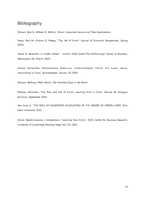 14
14
추천 연관자료
- 목차
-
I. Introduction
1. About Enron
2. What is Enron Crisis?
II. The consequences of Enron Crisis
1. Influence on US economy
2. Changes due to Enron Crisis
III. The reasons of Enron Crisis
1. Window dressing settlement
2. Moral hazard of CEOs
3. What is there behind all this?
IV. Lessons from Enron Crisis
1. The lessons of Enron case
2. Why other companies have to avoid this kind of crisis?
V. Conclusion
Bibliography
- 본문내용
-
1.3. The fall of Arthur Anderson accounting firm
Arthur Anderson was the auditor and consultant of Enron. However it overlooked the corrupt accounting practice of Enron, which was one of the main reasons of the crisis. After the Enron scandal, Andersen lost its major clients and got accused by its negligence in auditing Enron.
1.4. Mid- and long-term impacts on American energy industry
After Enron crisis, financial institutions raised the rate of interest on loans for energy-related corporations. Traditionally, energy industry’s liabilities are larger than other industries’. Thus, the financial difficulties became even more burdensome to energy industry, which in turn caused electric power companies to reduce investment on new power plant construction and caused gas companies to decrease investment on developing the reserves of natural gas. This raised the possibility that energy crisis would occur when the energy demand increases.
2. Improvements and changes
2.1. Awareness of the importance of transparent accounting
Enron crisis revealed a number of problems that US GAAP had. And it made people aware of the importance of transparent accounting. As a result, in 2002 at a meeting in Norwalk, Connecticut, the International Accounting Standard Board and the US Financial Accounting Standards Board agreed to harmonize their agenda and work towards reducing differences between IFRS and US GAAP. In February 2006, FASB and IASB issued a Memorandum of Understanding including a program of topics on which the two bodies will seek to achieve convergence by 2008.
Even after the Enron crisis, the Big Five accounting firms have yet to acknowledge the need for fundamental change to their independence rules. Instead, in a joint statement issued on Dec. 4, the CEOs of the Big Five focused largely on improving the rules of accountancy. Industry leader James S. Turley, chairman of Ernst & Young, says that rather than an audit failure, Enron "at its core was a business failure."
2.2. Enforcement of Sarbanes-Oxley Act
The Sarbanes-Oxley Act, adopted by the US Congress in 2002, is the most significant measure of federal securities and corporate law since the New Deal legislation of the 1930s. The act was a reaction to a number of major corporate and accounting scandals including those affecting Enron, Tyco International, Adelphia, Peregrine Systems and WorldCom. These scandals, which cost investors billions of dollars when the share prices of affected companies collapsed, shook public confidence in the nation's securities markets.
This act shows that all dishonest corporate leaders must be exposed and punished. It also made loose standard and false profit exist no longer in business world. In the bill a restriction to an auditor was added saying that accounting firms should rotate the in-charge partners on an auditing assignment every 5 years in order to prevent auditors from getting too cozy with their corporate clients.
III. The reasons of Enron Crisis
1. Window dressing settlement
Enron's nontransparent financial statements did not clearly detail its operations and finances with shareholders and analysts. In addition, its complex business model stretched the limits of accounting, requiring that the company use accounting limitations to manage earnings and modify the balance sheet to portray a favorable depiction of its performance. According to McLean and Elkid in their book 『The Smartest Guys in the Room』, "The Enron scandal grew out of a steady accumulation of habits and values and actions that began years before and finally spiraled out of control." From late 1997 until its collapse, the primary motivations for Enron’s accounting and financial transactions seem to have been to keep reported income and reported cash flow up, asset values inflated, and liabilities off the books.
The combination of these issues later led to the bankruptcy of the company, and the majority of them were perpetuated by the indirect knowledge or direct actions of Lay, Jeffrey Skilling, Andrew Fastow, and other executives. Lay served as the chairman of the company in its last few years, and approved of the actions of Skilling and Fastow although he did not always inquire about the details. Skilling, const
- 참고문헌
-
Dharan, Bala G.; William R. Bufkins. Enron: Corporate Fiascos and Their Implications.
Healy, Paul M.; Krishna G. Palepu, "The Fall of Enron” Journal of Economic Perspectives, Spring 2003)
James N. Bodurtha, Jr.:“Unfair Values” - Enron's Shell Game (The McDonough School of Business, Washington DC, March 2003)
Nanette Byrnes•Mike McNamee•Diane Brady•Louis Lavelle•Christopher Palmeri and bureau reports, “Accounting in Crisis”, Businessweek, January 28, 2009
McLean, Bethany; Peter Elkind. The Smartest Guys in the Room
Peñalva, Fernando, “The Rise and Fall of Enron: Learning from a Crisis”, Revista de Antiguos Alumnos, September 2002.
Seo Jung Ju, “THE ROLE OF AGGRESSIVE ACCOUNTING IN THE DEMISE OF ENRON CORP.”, Diss. Ewha University, 2002
Simon Deakin•Suzanne J. Konzelmann, “Learning from Enron”, ESRC Centre for Business Research, University of Cambridge Working Paper No 274, 2003
자료평가





- 필요했던 자료인데 내용도 좋네요~감사합니다 ^^
- bonos***
(2012.11.16 11:53:18)





- 레포트 쓰는데 도움이 많이 됐어요 감사합니다.
- janelee2***
(2012.07.12 23:09:28)
오늘 본 자료
더보기

최근 판매 자료
- [한국경제의 이해] 한국무역의 구조와 정책
- 조직구조설계 아모레퍼시픽 성공사례
- [유통과 프랜차이즈] Chapter 7 경로 구성원간의 갈등
- 애플 - 기업소개와 연혁
- [기업분석] 경영 전략(농심)
- [경영전략] 5-Forces Model 이론을 바탕으로 한 농심 분석
- 페이스북 마케팅 4P,STP,SWOT분석 및 페이스북 미래전략수립
- 워커힐호텔 경영사례및 마케팅전략
- [호텔경영론] 워커힐호텔의 마케팅과 경영전략
- [인사행정][인사][행정][실적주의][엽관주의]인사행정의 특징, 인사행정의 실적주의, 인사행정의 엽관주의, 인사행정의 정실주의, 인사행정의 인사관리, 인사행정의 능력발전, 향후 인사행정의 내실화 방안 분석
저작권 관련 사항 정보 및 게시물 내용의 진실성에 대하여 레포트샵은 보증하지 아니하며, 해당 정보 및 게시물의 저작권과 기타 법적 책임은 자료 등록자에게 있습니다. 위 정보 및 게시물 내용의 불법적 이용, 무단 전재·배포는 금지됩니다. 저작권침해, 명예훼손 등 분쟁요소 발견시 고객센터에 신고해 주시기 바랍니다.









